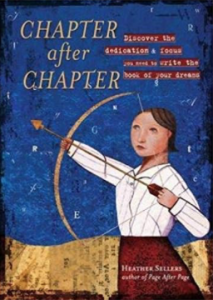If you have seen author and editor Shawn Coyne’s website, you’ll see the points below and know that I’m not giving anything away that he hasn’t already posted or put into his book The Story Grid, but I have to tell you, being conscious of the five aspects he identifies necessary for every scene, act and an entire book has made a difference in my writing.
In previous posts I’ve talked about how I am a student in the SMU Writer’s Path program. There we have learned to keenly focus on the power of Christopher Vogler’s The Writer’s Journey–the Hero’s Journey which was largely spelled out by Joseph Campbell.
In March I learned of Coyne. In late March I began constructing the organizational details for my hero’s journey for my latest draft manuscript–“First Things and Final….” As I developed the wheel of the hero’s journey for my characters, I also printed out a sheet for each scene I anticipated being necessary to tell my story.
Making sure these five elements were in EVERY scene, and that I could pull the camera back and look at each of my three/four acts–Act I, Act II-A, Act II-B, and Act III–and then pull the lens back even further to understand the compositional structure of the whole book, made every bit of difference in how I wrote this third manuscript versus how I wrote my first two books on completely different subjects. In fact, as I’ve been working to revise the first two, I have been developing and printing out scene worksheets for each of the scenes in the other two books to help with my revision process.
Is this a sure fire way to get published? We will have to wait and see. I seem to excel at cranking out stories. What I need to do is find a way for my mind to be able to enjoy the tediousness that is involved in seeking out an agent, writing a query and then sending them out and following up as appropriate. I also need to develop greater discipline in going back into my previously written material and striving to make it better.
Having been unleashed to write stories, my mind is happier doing the writing and doesn’t like to be bogged down in the query process. That is something I must address lest I become a famous writer posthumously.
So what is this structure all about? It’s this simple–Every scene of your book needs to have these five elements. Otherwise, as Coyne puts it, it’s a nice collection of words, not a scene.
Inciting Incident--Something bad happens to a character that they were not expecting. They thought one thing was going to happen, but it did not. (Think of princess Kitty at the ball in” Anna Karenina” and she thought Count Vronksy was going to ask her to marry her.)
Progressive Complications–Insult to injury. Things get worse than what was initially expected. (She’s got that one lad calling her his first conquest as he’s asked her to dance and she’s promised him her third, as if she was confidently thinking it won’t be necessary.)
Crisis–Best of two bad decisions. (Anna has begun to dance with Kitty’s heart’s desire and Kitty is forced to accept dances with the others so she will stay in front of him in hopes that he will return to her, but all the while she can see there is something going on between Anna and the count.)
Climax–Fingers bent, things are getting worse. (Anna and the count continue and it’s now clear that he won’t be having much of anything further to do with Kitty.)
Resolution–The character has gone from an initial state to almost the complete opposite of where they were at the beginning. In Kitty’s case she was positive and excited about her future prospects of being swept away in a fairy tale with her prince–the count–and in this case, that dream has been shattered by the likes of Anna, a married woman with a son.
Recognizing these five elements as applied above to the three facets of every book–scene, act and over all story, made a difference to me when I constructed my present work, “First Things and Final…” Now whether that will ever lead to my books being published remains to be scene, but for me, it has made a significant difference and I encourage you to learn more about Coyne’s Story Grid.







0 Comments